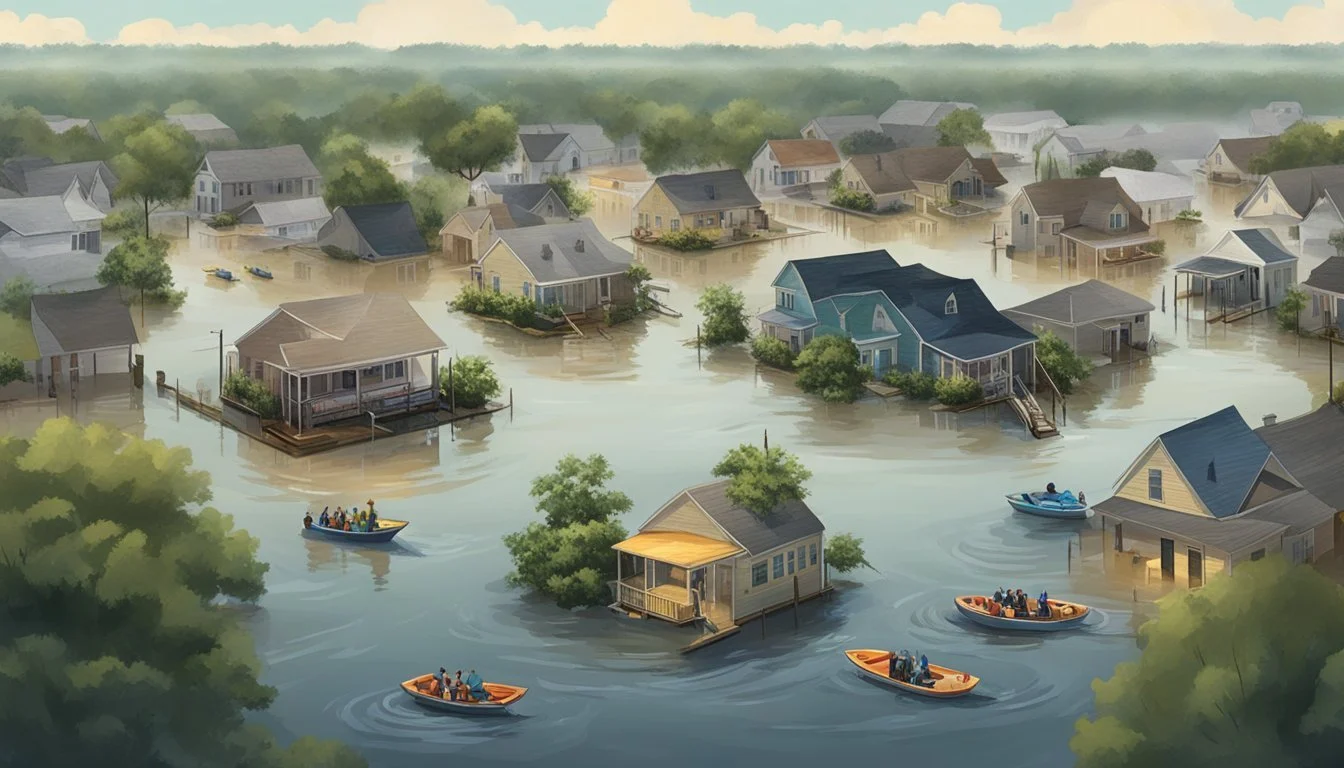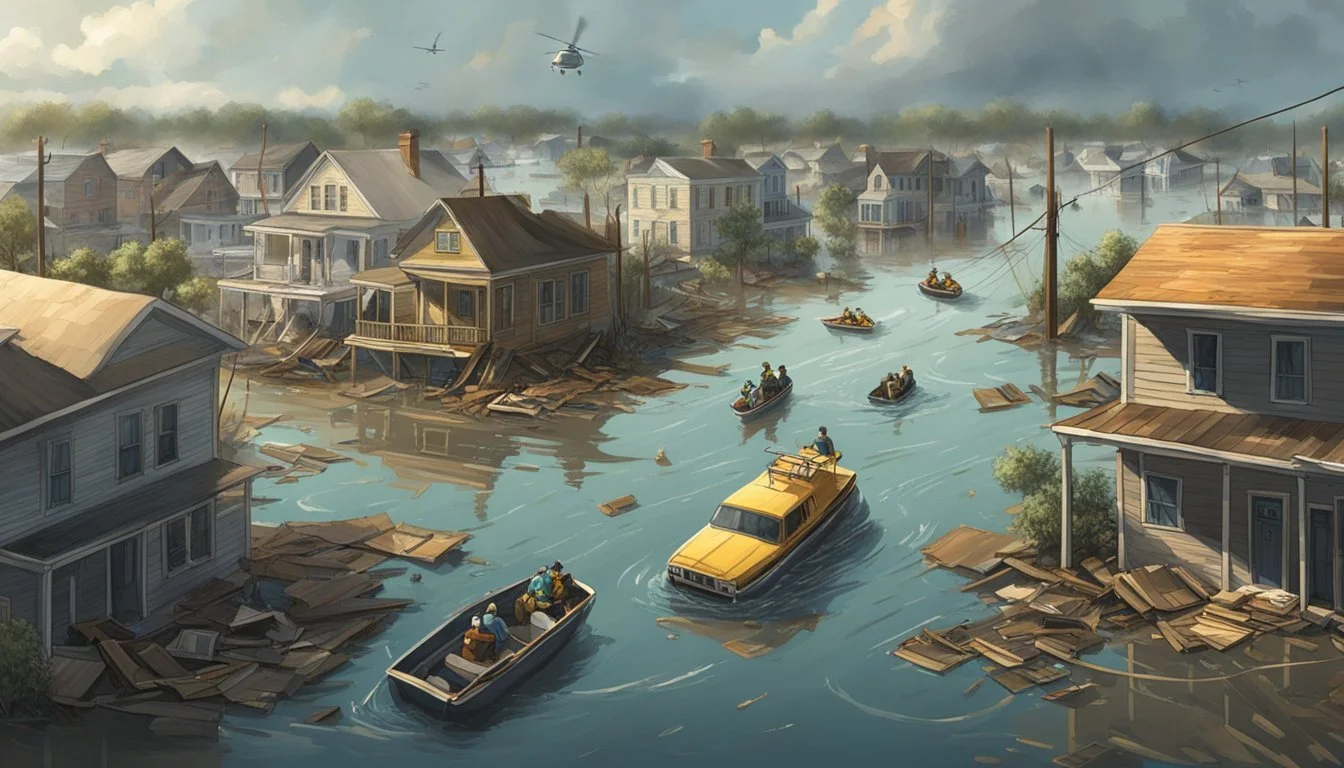5 Louisiana Floods Documentaries That Dive into the 2016 Disaster
Exploring the Aftermath and Recovery
The 2016 Louisiana flood was a catastrophic event that reshaped lives and landscapes across the state. This natural disaster, triggered by unprecedented rainfall, submerged entire communities and left thousands displaced. Five documentaries provide in-depth looks at the causes, impacts, and aftermath of this historic flood, offering viewers a comprehensive understanding of the event.
These films capture the human stories behind the statistics, showcasing the resilience of Louisiana residents in the face of extreme weather. From aerial footage of the vast floodwaters to intimate interviews with survivors, the documentaries paint a vivid picture of the disaster's scope and significance.
By exploring the 2016 flood through multiple lenses, these documentaries serve as important historical records and educational tools. They examine the meteorological factors that led to the deluge, the emergency response efforts, and the long-term consequences for affected communities. Viewers gain insights into the challenges of rebuilding and the ongoing efforts to improve flood preparedness in Louisiana.
The Climatic Conditions Leading to the Floods
The August 2016 Louisiana floods resulted from a perfect storm of meteorological factors. Record-breaking rainfall combined with a stalled low-pressure system to create catastrophic flooding across the region.
August 2016 Rainfall and Low Pressure Systems
In early August 2016, a low-pressure system developed over the Gulf of Mexico. This system moved slowly westward, pulling in massive amounts of tropical moisture. The result was historic rainfall totals across Louisiana.
Over a 3-day period, some areas received more than 20 inches of rain. Parts of East Baton Rouge Parish saw rainfall exceeding 30 inches. NOAA data shows precipitation totals reached over two feet in southeastern Louisiana.
The slow movement of the storm system was critical. It allowed rain to fall continuously over the same areas for days. This overwhelmed drainage systems and waterways, leading to widespread flooding.
The Environmental Factors and Science Behind the Deluge
Several environmental factors contributed to the severity of the flooding. The atmosphere contained unusually high levels of moisture for August. This provided ample fuel for intense rainfall.
Warm Gulf of Mexico waters increased evaporation, further feeding moisture into the system. Scientists point to climate change as a potential factor in intensifying such extreme weather events.
The topography of southern Louisiana also played a role. Much of the area is low-lying, with poor natural drainage. This exacerbated flooding as water struggled to flow out of affected regions.
USGS data shows many rivers and streams reached record levels during the event. The Amite River at Denham Springs crested over 4 feet above its previous record.
The Scale of the Catastrophe
The 2016 Louisiana floods devastated a vast area, causing widespread destruction to homes and infrastructure. The disaster's impact stretched across multiple parishes, with certain regions bearing the brunt of the damage.
Areas Most Affected: Baton Rouge to Lafayette
Baton Rouge and its surrounding areas faced severe flooding. The Comite River overflowed, inundating nearby communities. Denham Springs, just east of Baton Rouge, saw 90% of its homes and businesses submerged.
Lafayette Parish experienced significant flooding as well. The Vermilion River rose to record levels, causing extensive damage to residential areas.
Between these two cities, numerous towns and rural areas suffered. The floods affected a 50-mile stretch of Interstate 12, disrupting transportation and rescue efforts.
Statistics of Homes and Parishes Stricken
The flood's impact was staggering:
13 parishes declared federal disaster areas
Over 146,000 homes damaged
30,000 people rescued
11 lives lost
Livingston Parish was hit particularly hard:
75% of homes destroyed
90% of residents affected
Economic toll:
$10-15 billion in damages
278,500 residents applied for federal assistance
These numbers highlight the catastrophic scale of the 2016 Louisiana floods, underscoring the immense challenges faced by affected communities in the recovery process.
Federal and State Response to the Crisis
The 2016 Louisiana floods prompted swift action from federal and state agencies. Key organizations mobilized resources and personnel to assist affected communities.
Role of FEMA and the Red Cross
FEMA played a crucial role in the disaster response. The agency provided over $761 million in federal grants to support infrastructure projects and cover expenses related to the August 2016 flood. This funding complemented nearly $773 million in FEMA grants already allocated to assist individuals and communities.
The Red Cross mobilized volunteers and resources to provide immediate relief. They established shelters, distributed supplies, and offered mental health support to flood victims.
FEMA typically reimburses 75% of eligible disaster-related costs. This financial assistance helped local governments and organizations recover from the extensive damage caused by the floods.
Louisiana State Police and Emergency Management
Louisiana State Police conducted door-to-door checks in flooded areas to ensure resident safety. They coordinated with local law enforcement to maintain order and assist in evacuation efforts.
The state's emergency management agency worked closely with FEMA to coordinate response efforts. They assessed damage, managed resources, and facilitated communication between various agencies involved in the disaster response.
State officials declared a state of emergency, activating additional resources and personnel. This declaration allowed for quicker deployment of aid and streamlined the process for receiving federal assistance.
The Humanitarian Aspect
The 2016 Louisiana floods sparked a massive humanitarian response. Rescue teams, advocates, and volunteers worked tirelessly to save lives and provide relief. The disaster's impact on households was severe, with many families displaced and in need of shelter.
Rescue Operations by Teams and Advocates
Rescue teams from across the USA mobilized quickly to assist flood victims. The Louisiana National Guard deployed over 3,300 soldiers and airmen. They rescued more than 19,000 people and 2,700 pets.
Local advocates played a crucial role in coordinating relief efforts. The Advocate newspaper became a hub for information, connecting those in need with available resources.
Volunteer organizations like the Cajun Navy formed spontaneously. These civilian boaters rescued thousands trapped by rising waters.
Shelters, Deaths, and the Impact on Households
The floods claimed 13 lives and forced over 30,000 people into emergency shelters. Red Cross operated 70 shelters across affected areas.
More than 146,000 households registered for federal disaster assistance. FEMA provided over $1 billion in grants for temporary housing and home repairs.
The disaster damaged or destroyed 50,000 homes. Many families faced long-term displacement, straining local housing markets.
Schools closed for weeks, disrupting education for thousands of students. Some districts reported significant enrollment drops as families relocated.
Rebuilding and Recovery Efforts
Louisiana faced immense challenges in the aftermath of the 2016 floods. Rebuilding efforts focused on restoring homes and infrastructure while implementing measures to enhance resilience against future disasters.
Reviving the Community: Cleanup and Reconstructing Homes
Volunteers and relief organizations played a crucial role in the initial cleanup phase. They removed debris, sanitized flooded areas, and distributed essential supplies. The Restore Louisiana program provided grants to homeowners for rebuilding and elevation of structures.
Over 100,000 households received federal assistance for repairs. Many residents opted to rebuild with flood-resistant materials and elevated foundations. Local contractors worked tirelessly to meet the high demand for construction services.
Community centers and schools underwent extensive renovations. Some buildings required complete reconstruction due to severe water damage.
Long-Term Flood Insurance and Economic Recovery
The National Flood Insurance Program faced scrutiny after the disaster. Many affected residents lacked adequate coverage, prompting calls for reform. Louisiana officials pushed for more affordable and comprehensive flood insurance options.
The state allocated $1.7 billion in federal funds for long-term recovery. This money supported small business grants, infrastructure improvements, and hazard mitigation projects.
Baton Rouge implemented stricter building codes in flood-prone areas. The city also invested in improved drainage systems and flood control measures.
Economic recovery efforts included job training programs and incentives for businesses to rebuild in affected areas. Tourism initiatives aimed to attract visitors and boost the local economy.


